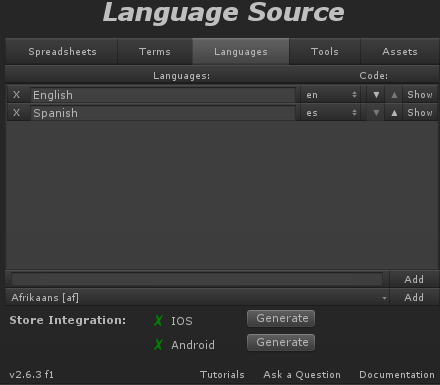Creating a Language Source
Language Sources are the base of the localization. They store all the Terms used in the game and the translation of each of those Terms into the selected languages.
Sources could be stored in a variety of places
|
On most projects it’s recommended to use the Language Source stored in the Resources folder so that the same source became available to all your scenes without having to keep a localization asset up-to-date in all scenes.
Please, notice that in the editor all the languages and translations are stored in the LanguageSource. This makes really easy editing and previewing the translations of each term. However, at runtime, all languages are unloaded, and only the current language is kept in memory
A ready to use Language Source is provided at: Assets \ Resources \ I2Languages.asset |
|
To start localizing the project, click on the I2Languages.asset (this is the recommended approach) or Create a new GameObject in the scene and add a Language Source component (I2 \ Localization \ Source) |
|
Created with the Personal Edition of HelpNDoc: Easily create CHM Help documents
